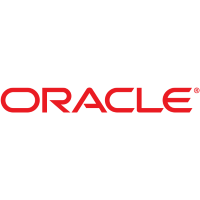
Oracle Corp
NYSE:ORCL
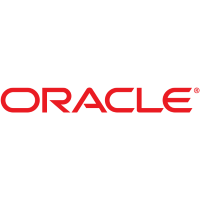
Oracle Corp
Oracle Corporation, founded in 1977 by Larry Ellison, Bob Miner, and Ed Oates, began its journey at a time when the concept of relational databases was just starting to gain traction. Initially, Oracle sought to build a product that offered a more systematic approach to storing and retrieving vast amounts of information, which was a paradigm shift from the mainframe-dominated era. By developing software that businesses could use to manage database operations efficiently, Oracle carved a niche in the technology landscape. Their flagship Database Management System, a breakthrough at its inception, quickly became a leader in the market. This core offering allowed organizations to maintain and access their data, underscoring Oracle's commitment to help businesses streamline their operations. Over the years, Oracle has successfully evolved by expanding its software suite and embracing innovation, leveraging mergers and acquisitions to underpin its position as an essential player in enterprise solutions.
Transitioning into the modern era, Oracle has progressively diversified beyond its reputed database software into comprehensive cloud computing solutions, a move reflecting the tectonic shift in enterprise technology needs. With the rise of cloud services, Oracle made strategic adaptations to capture the lucrative Software as a Service (SaaS), Infrastructure as a Service (IaaS), and Platform as a Service (PaaS) markets. The company's business model, now a combination of software licensing, subscription-based cloud models, and technical support services, allows it to tap into various revenue streams while providing flexibility and scalability to its clients. Oracle's cloud offerings allow businesses to execute complex data operations without investing in extensive hardware infrastructure, a proposition that has become increasingly appealing as companies undergo digital transformation. Through its holistic approach, Oracle remains a central figure in helping organizations harness the power of their data, positioning itself as a critical partner in the digital economy.
Earnings Calls
In Q2, Oracle reported revenue of $14.1 billion, reflecting a 9% year-over-year increase, primarily driven by its cloud services, which now account for 77% of total revenue. Cloud revenue is projected to exceed $25 billion this fiscal year, with notable growth in Infrastructure as a Service (IaaS) up 52%. The company expects continued double-digit total revenue growth into fiscal year 2025. With a remaining performance obligation (RPO) of $97 billion, up 50%, and substantial demand for AI infrastructure, Oracle's momentum appears strong, despite challenges from currency fluctuations affecting EPS guidance slightly.
Management

Lawrence J. Ellison, commonly known as Larry Ellison, is an American business magnate and a co-founder of Oracle Corporation, one of the world's largest software companies. Born on August 17, 1944, in New York City, Ellison was raised in Chicago by his aunt and uncle after being given up for adoption. He later attended the University of Illinois and the University of Chicago, but he did not complete his degree at either institution. In 1977, Ellison co-founded Oracle Corporation with Bob Miner and Ed Oates. The company was initially called Software Development Laboratories (SDL) but later went through a few name changes before becoming Oracle. Ellison's vision was to create a relational database management system (RDBMS) that would be based on Edgar F. Codd's theories, which at that time were not yet fully implemented in the industry. Oracle's breakthrough came when they won a contract with the CIA to build a database system; the project was called "Oracle," and the name stuck. Under Ellison's leadership as CEO, Oracle grew dramatically, expanding its product line through strategic acquisitions and becoming a major player in the technology sector. He served as CEO until 2014, when he stepped down to become the company's Chief Technology Officer and Executive Chairman. His tenure at Oracle has made him one of the wealthiest individuals in the world. Ellison is known for his flamboyant lifestyle and interest in sailing, aviation, and real estate. He has won the America's Cup sailing competition and owns several luxurious properties, including the Hawaiian island of Lanai. Additionally, he has been active in philanthropy, contributing to medical research and education through his Lawrence Ellison Foundation. Ellison's leadership style and competitive nature have made him a notable figure in the tech industry, and his contributions to the development and commercialization of relational databases have had a lasting impact on computing and business practices worldwide.
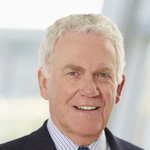
Jeffrey O. Henley is a notable figure in the business world, particularly known for his long-standing association with Oracle Corporation. Henley joined Oracle in 1991 and served as the company's Executive Vice President and Chief Financial Officer until 2004. During his tenure as CFO, he played a crucial role in managing the company's financial growth and expansion. In 2004, Henley transitioned to the role of Chairman of the Board at Oracle, a position he held until 2014. As Chairman, Henley worked closely with Oracle's executive team and board of directors to guide the company's strategic direction. Under his leadership, Oracle continued to expand its influence and market presence in the technology sector, making significant acquisitions and advancements in software and cloud computing. Henley's career before Oracle included various financial management roles at companies such as Pacific Holding Company and Saga Corporation. He holds a Bachelor’s degree in Economics from the University of California, Santa Barbara, and an MBA in Finance from UCLA. Henley's contributions to Oracle and the broader tech industry have been widely recognized, and he remains a respected figure in corporate governance and financial management circles.

Stuart A. Levey is a recognized legal and financial expert, best known for his expertise in national security, anti-money laundering, and sanctions policy. Before joining Oracle Corporation, Levey held significant positions in both the public and private sectors. He served as the first Under Secretary for Terrorism and Financial Intelligence at the U.S. Department of the Treasury, where he played a pivotal role in developing the financial instruments used to combat terrorism and financial crime. In the private sector, Levey worked at HSBC Holdings Plc as Chief Legal Officer, where he focused on enhancing the bank's compliance framework and legal operations globally. His work in these positions has significantly influenced the fields of finance and international policy, earning him a reputation as a leading expert in financial regulation and governance. At Oracle Corporation, Stuart Levey serves as the Executive Vice President and Chief Legal Officer. In this role, he oversees the company's legal affairs and compliance programs worldwide, ensuring that Oracle navigates complex legal and regulatory challenges effectively. His combination of public sector experience and private sector acumen makes him a valuable leader in the legal and financial realms.

Douglas A. Kehring serves as the Executive Vice President of Corporate Operations at Oracle Corporation. He plays a crucial role in managing and optimizing Oracle's global operations. Kehring has been with Oracle for several decades and is known for his deep understanding of corporate finance, strategy, and operations. In his role, he is responsible for driving business process improvements, overseeing key operational functions, and ensuring the alignment of corporate strategies with day-to-day operations. Kehring's leadership is instrumental in Oracle's growth and efficiency initiatives, contributing significantly to the company’s development and execution of strategic objectives. His experience and expertise have been invaluable in enhancing Oracle's internal efficiencies and operational capabilities. Before taking on his current role, Kehring held various positions within Oracle that allowed him to build extensive experience in operational and strategic leadership. His long tenure at Oracle highlights his significant contribution to the company's success and his importance as a member of the executive team.


Ms. Jae Evans serves as the Chief Information Officer (CIO) at Oracle Corporation. With a keen focus on driving technology strategy and innovation, she plays a crucial role in overseeing the company’s global IT infrastructure and services. Her leadership is pivotal in advancing Oracle's technological capabilities to support its expansive cloud offerings and meet evolving business needs. Prior to her role at Oracle, Ms. Evans held significant positions in major tech companies, contributing to her robust experience in IT operations and enterprise technology transformation. Her work is distinguished by a commitment to leveraging technology to accelerate business growth and efficiency.
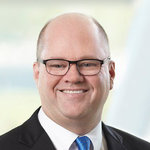
Ken Bond is a prominent figure at Oracle Corporation, where he has made significant contributions in the realm of investor relations. As Senior Vice President of Investor Relations, Ken Bond plays a critical role in communicating Oracle's financial performance and strategic direction to shareholders, analysts, and the broader financial community. With a deep understanding of Oracle's business and technology, he adeptly navigates the complexities of the software and cloud services industry, ensuring transparent and effective communication between the company and its investors. Under his leadership, Oracle's investor relations efforts have been pivotal in building and maintaining investor confidence, particularly as the company transitions towards cloud technology. His extensive experience and strategic insight continue to be vital assets to Oracle's executive team.

Andrew Morawski is a notable executive at Oracle Corporation, where he serves as the Senior Vice President and General Manager for Oracle Communications, a role in which he oversees the division responsible for providing software and cloud solutions to service providers and enterprises. Morawski joined Oracle with extensive experience in the communications and technology sectors. Before joining Oracle, he held various leadership positions at prominent technology and telecommunications companies. He served as the Head of IoT at Vodafone Americas, and has also held senior roles at companies like Telstra and BT Global Services. In his career, Morawski has been recognized for his work in driving innovation and growth within the communications industry, focusing on digital transformation and the development of new technologies to better serve customers globally. His expertise and leadership have been critical in helping organizations adapt to the rapidly evolving tech landscape, especially in the areas of cloud computing, 5G, and IoT solutions.
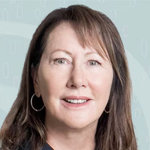
Joyce Westerdahl served as the Executive Vice President of Human Resources at Oracle Corporation. During her tenure at Oracle, she played a crucial role in shaping the company’s HR strategies and policies, contributing significantly to its growth and development. She was responsible for overseeing global human resources operations, including talent recruitment, organizational development, employee relations, and workforce planning. Westerdahl worked closely with Oracle's leadership to align HR practices with the company's overall strategic goals. Her efforts were instrumental in fostering a corporate culture that emphasized innovation, diversity, and employee engagement. Joyce Westerdahl's leadership in HR helped Oracle maintain its position as a leading technology company by ensuring that it attracted, retained, and developed top-tier talent. She retired after decades of service, leaving behind a legacy of significant contributions to Oracle’s corporate environment.
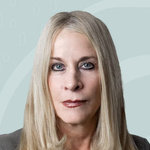
Mary Ann Davidson served as the Chief Security Officer (CSO) at Oracle Corporation, where she gained recognition for her leadership in information security and assurance. During her tenure, Davidson played a pivotal role in shaping Oracle's approach to security, particularly in the development and implementation of secure software practices and policies. She joined Oracle in the late 1980s and moved through various roles before becoming CSO. Davidson was responsible for overseeing security evaluations, assessments, and incident handling within Oracle. Her expertise in security led her to become an influential voice in the tech industry, advocating for robust security measures and sharing insights on the importance of secure coding practices. Known for her direct and clear communication style, Mary Ann Davidson frequently participated in cybersecurity forums, conferences, and industry discussions. She contributed to various publications on software security and was actively involved in initiatives to enhance security standards across the industry. Throughout her career, Davidson emphasized the role of corporate responsibility in maintaining customer trust through security and advocated for more significant efforts toward fostering a culture of security awareness. Mary Ann Davidson’s influence extended beyond Oracle, as she was involved in several government and industry advisory boards focused on cybersecurity, further highlighting her impact and commitment to improving information security practices.















































 You don't have any saved screeners yet
You don't have any saved screeners yet

Thank you for standing by, and welcome to the Oracle Corporation Second Quarter Fiscal Year 2025 Earnings Conference Call. [Operator Instructions] I'd now like to turn the call over to Ken Bond, Head of Investor Relations. You may begin.
Thank you, Rob, and good afternoon, everyone, and welcome to Oracle's Second Quarter Fiscal Year 2025 Earnings Conference Call. A copy of the press release and financial tables, which includes a GAAP to non-GAAP reconciliation and other supplemental financial information can be viewed and downloaded from our Investor Relations website. Additionally, a list of many customers who purchased Oracle Cloud Services or went live on Oracle Cloud recently will be available from our Investor Relations website as well.
On the call today are Chairman and Chief Technology Officer, Larry Ellison; and Chief Executive Officer, Safra Catz. As a reminder, today's discussion will include forward-looking statements, including predictions, expectations, estimates, or other information that might be considered forward-looking. Throughout today's discussion, we will present some important factors relating to our business, which may potentially affect these forward-looking statements.
And these forward-looking statements are also subject to risks and uncertainties that may cause actual results to differ materially from statements being made today. As a result, we caution you from placing undue reliance on these forward-looking statements, and we encourage you to review our most recent reports, including our 10-K and 10-Q and any applicable amendments for a complete discussion of these factors and other risks that may affect our future results or the market price of our stock.
And finally, we are not obligating ourselves to revise our results or these forward-looking statements in light of new information or future events. Before taking questions, we'll begin with a few prepared remarks, and with that, I'd like to turn the call over to Safra.
Thanks, Ken, and good afternoon, everyone. Q2 was another excellent quarter with total revenue at the high end of my constant currency guidance, and EPS was actually $0.01 above the high end. These results are being driven by the fact that our largest revenue component, cloud services and license support now represents 77% of total revenue and is also our fastest-growing line item, which in turn, is driving the acceleration of overall revenue growth.
We expect cloud revenue to reach $25 billion this fiscal year. This is happening for several reasons. First, our cloud is faster and is less expensive than other clouds. We remain the preferred cloud for AI workloads as well as for non-GPU cloud infrastructure services. In addition, our ability to deploy our cloud in many sizes gives our customers flexibility, and our multi-cloud agreements with Microsoft, Google, and AWS provide customers more choice in how they can migrate their Oracle databases to the cloud.
And our strategic SaaS applications continue to grow rapidly. And we are also seeing more of our industry-based cloud applications come online, which immediately contribute to revenue growth. You can see all of this in the momentum in the acceleration of our cloud growth and the 50% growth of our $97 billion RPO number, remaining performance obligation. And today, we're telling you again that revenue growth will accelerate further in the coming quarters.
Turning to Q2, and I want to remind you that our quarter ended on Saturday a week ago, and here we are announcing our results, and that's only possible because we use Oracle Fusion. Now as for the numbers, we saw all segments exceeding our internal forecast. Now as the dollar strengthened in the quarter, the 1% currency benefit for total revenue and the $0.02 to $0.03 benefit for EPS that were present in my August guidance retreated, with total revenue and EPS in Q2 essentially unaffected by currency movement.
As usual, as I go over things today, I'll be discussing our financials using constant currency growth rate as this is how we manage the business. So here it goes. Total cloud revenue, that's SaaS and IaaS, was up 24% at $5.9 billion with SaaS revenue of $3.5 billion, up 10%, and IaaS revenue of $2.4 billion, up 52%, on top of the 50% growth reported last year. As a reminder, we exited the advertising business last quarter, which had the effect of lowering the total cloud revenue growth by 2% this quarter.
Total cloud services and license support for the quarter was $10.8 billion, up 12%, driven again by OCI, our strategic cloud application and autonomous database. Infrastructure subscription revenues, which includes license support, were $6 billion, up 17%. Record-level AI demand drove Oracle Cloud Infrastructure revenue up 52%. But excluding legacy hosting infrastructure, cloud services revenue was up 55%. Our infrastructure cloud services now have an annualized revenue of $9.7 billion.
OCI consumption revenue was up 58% as demand continues to outstrip supply. Growth in the AI segment of our infrastructure business was extraordinary. GPU consumption was up 336% in the quarter. And we delivered the world's largest and fastest AI supercomputer, scaling up to 65,000 NVIDIA H200 GPUs. Cloud database services, which were up 28% and now have an annualized revenue of $2.2 billion. As on-premise databases migrate to the cloud on OCI, either directly or through our database at cloud services with Azure, Google, and AWS, we expect the cloud database revenues collectively will be the third leg of revenue growth alongside OCI and strategic SaaS.
We currently -- we are currently live in 17 cloud regions with database at cloud services and have another 35 planned with Azure, Google, and AWS. Database subscription services, which includes database license support, were up 5%. Application subscription revenue, which includes product support, were $4.8 billion and up 7%. Our strategic back-office SaaS applications now have annualized revenue of $8.4 billion and were up 18%. Software license revenues were up 3% to $1.2 billion, including Java, which saw excellent growth. So all in, total revenues for the quarter were $14.1 billion, up 9% from last year.
Now shifting to gross profit and operating income. The gross profit dollars of cloud services and license support grew 9% in Q2. As our cloud businesses continue to scale, the gross margins of both cloud applications and cloud infrastructure have each been trending higher. We continue to display expense discipline, which, of course, we're known for, especially with R&D, sales and marketing, and G&A expenses, which collectively continue to grow slower than revenue, a trend that I expect to continue.
The Q2 operating income grew 10% and the operating margin was 43%, up 60 basis points from last year. The non-GAAP tax rate for the quarter was actually 20.1%, which is higher than my 19% guidance. Even as higher tax rate lowered EPS by $0.02, we still hit the high end of my constant currency guidance. [indiscernible] The non-GAAP EPS was $1.47 in U.S. dollars, up 10% in USD and 10% in constant currency. The GAAP EPS was $1.10 in USD, and that's up 24% in USD and 23% in constant currency.
At quarter end, we had $11.3 billion in cash and marketable securities. The short-term deferred revenue balance was $9.4 billion, up 8%. With CapEx at $4 billion for the quarter, free cash flow was negative $2.7 billion and operating cash flow was positive $1.3 billion. Given the demand that you see in our RPO numbers and the additional demand we see in our pipeline, I expect fiscal year 2025 CapEx will be double what it was in fiscal year FY '24. As always, we remain careful to pace and align our CapEx investments appropriately and in line with booking trends.
On a trailing 12-month basis, operating cash flow was up 19% at $20.3 billion and free cash flow was $9.5 billion. Our remaining performance obligation, or RPO, is now at $97.3 billion, up 50% in constant currency and reflects the growing trend of customers wanting larger and longer contracts as they see firsthand how Oracle Cloud Services are benefiting their businesses. Further, our cloud RPO grew near -- our cloud RPO grew nearly 80% and now represent nearly 3/4 of total RPO. Approximately 39% of the total RPO is expected to be recognized as revenue over the next 12 months, and we continue to see the growth of current RPO accelerate.
We have now about 98 cloud regions live and many, many more to follow. That we have more cloud regions than any of the other hyperscaler reflects the strategic advantage of our Gen 2 architecture. We can start a new cloud region with a handful of racks and then scale up with customer demand. Additionally, our data centers are highly automated and identical in features and function, varying only in scale. This size and flexibility and deployment optionality of our cloud regions continue to be a significant advantage for us.
As we've said before, we're committed to returning value to our shareholders through technical innovation, acquisitions, stock repurchases, prudent use of debt, and a dividend. This quarter, we repurchased nearly 1 million shares for a total of $150 million. In addition, we paid out dividends of $4.4 billion over the last 12 months. And the Board of Directors again declared a quarterly dividend of $0.40 per share.
Before I dive into specific Q3 guidance, I'd like to share some overarching thoughts about the financial benefits I expect we will see over the coming quarters and years. To start, we continue to see excellent demand for our cloud services, which you see in our RPO growth. And while this growth is stellar, our pipeline is actually growing even faster, and our win rates are growing higher with the recent win at Meta being a prime example of why we expect that our RPO balance will climb again in Q3. Meta was not booked in the Q2 quarter, only in Q3.
In fiscal year 2024, we signed some big deals and many have begun to generate revenue. We expect that those will continue to ramp higher in the second half and be a key contributor to revenue growth acceleration this year and next. For fiscal year 2025, we remain very confident and committed to full year total revenue growing double digit and full year total Cloud Infrastructure growing faster than the 50% reported last year.
Okay. Let me now turn to guidance, which I'll review on a non-GAAP basis. In terms of currency, we've seen a dramatic shift due to significant strengthening of the U.S. dollar. To put this in perspective, in Q2, we expected currency to have a $0.03 positive effect on EPS. For Q3, assuming exchange rates remain the same as they are now, currency should have a $0.03 negative effect on EPS and a 2% negative effect on revenue. However, as the dollar strengthened, it may not hold out the whole quarter and may be different.
All right, total revenue are expected to grow from 9% to 11% in constant currency and are expected to grow from 7% to 9% in USD at today's exchange rate. Total cloud revenue is expected to grow from 25% to 27% in constant currency and is expected to grow from 23% to 25% in USD. Non-GAAP EPS is expected to grow between 7% to 9% and be between $1.50 and $1.54 in constant currency. Non-GAAP EPS is expected to grow between 4% to 6% and be between $1.47 and $1.41 in USD.
I should mention that my Q3 EPS guidance is negatively impacted by $0.05 due to an investment loss in another company that we are a partial owner of. Lastly, my EPS guidance for Q3 assumes a base tax rate of 19%. However, like in Q2, onetime tax events and other things can cause actual tax rates to vary. And with that, I'll turn it over to Larry for his comments.
Thank you, Safra. Oracle Cloud Infrastructure trains several of the world's most important generative AI models. Our major AI customers include OpenAI, xAI, NVIDIA, Cohere, and most recently, Meta with their large-scale Llama models. Oracle continues to win large AI training workloads because we're faster and less expensive than the other infrastructure clouds.
And we just extended our AI performance advantage by delivering the largest and fastest AI supercomputer in the world, scaling up to 65,000 NVIDIA H200 GPUs. The Oracle Cloud trains dozens of AI models and embeds hundreds of AI agents in cloud applications. Oracle's AI agents automate drug design, image and genomic analysis for cancer diagnostics, audio updates to electronic health records for patient care, satellite image analysis to predict and improve agricultural output, fraud and money laundering detection, dual-factor biometric computer log-ins, and real-time video weapons detection and schools.
Furthermore, the vector capabilities of the new AI version of our database, Oracle 23ai enables our customers to easily use their existing data in their existing databases to augment and specialize the training of industry-standard generative AI models like ChatGPT, Grok and Llama. The Oracle Cloud and the Oracle 23ai vector database makes it easy for our customers to build their own AI agents and use their own data to reap the benefits of the AI revolution.
Oracle is training AI models and developing AI agents that will improve the rate of scientific discovery and economic development and corporate growth throughout the world. The scale of this opportunity is unimaginable. As Safra said, this fiscal year, total Oracle cloud revenue should top $25 billion, and this is just the beginning of the beginning. Back to you.
Thank you, Larry. Rob, if you could please poll the audience for questions?
[Operator Instructions] Your first question today comes from the line of Mark Moerdler from Bernstein.
Congratulations on the quarter. I'd like to gain better insight into OCI. OCI is designed differently from its larger peers, deliverable in just [ 10 ] and shortly through racks and servers. Can you explain how the architectural difference impacts how you build and deliver OCI racks and how it will impact how many data center regions you could have compared to your peers? And then how might this affect your CapEx growth over the next 5 years?
Okay. Well, all the data centers are the same racks, so you think of it as completely modular. We have a basic rack and to build a region, it takes 6 racks, the smallest region we can build. So our racks started under 50 kilowatts and our biggest data centers, so -- excuse me, so our basic small data centers, 50 kilowatts. And our data centers, the largest data center we're currently building now is 1.6 gigawatts.
So that's quite a range, 50 megawatts to 1.6 gigawatts. And when we build them and we put them in inventory, the racks are pretty much the same. So it's very easy for us to manufacture these. It's lower cost to manufacture these. The inventory is less because they're all kind of the same. Furthermore, every cloud region has all of our services. They have all the same services. So it's easy for customers. We don't have to provision like our competitors do. Our competitors have some of their services in some regions and some of their services in other regions.
We have all of our services in all of our regions, even though we are both smaller in terms of the small -- our smallest region, and larger in terms of our largest region than our competitors. When all of our racks are the same and all of our services are the same, they become very easy or, I should say, easier to automate. They're all identical. We have 1 suite of automation tools that works in all 100 of our current regions.
And it makes it possible because of the high degree of automation to run not dozens of regions but hundreds or, even theoretically, thousands of regions as individual customers are dedicating their own region. Individual customers are buying complete Oracle regions and installing them. If you -- what seems like it would be on-premise, though it is a full Oracle Cloud region, just happens to be in a dedicated data center to that customer. We are selling a lot of those as well. So it allows us to address a market that our competitors can't reach. So standardization, automation, and from the smallest to the largest data centers give us a huge advantage in competing in this marketplace.
On the CapEx side, what we can do since our competitors always have to land with extremely large footprints before they can even get started, we can land with smaller footprints, have consumption and expand as customers need it. And this allows us to really match our capital expenditure with ultimately our revenue because it only -- we don't have to spend a long time with empty centers because we literally can start small and just fill them up as our customers are consuming. And I think this is really something that is expressed also in the profitability of our cloud and keeps showing up because of that.
It's extremely helpful. I really do appreciate it.
Your next question comes from the line of Siti Panigrahi from Mizuho.
It's impressive to see OCI growth 52% and even database-as-a-service up 28%. So as you execute on your multi-cloud strategy, can you provide some color on the database migration to cloud or even database-as-a-service traction? And what are you hearing from customers as they prepare to migrate on-prem database to cloud? And how should we think about the contribution to revenue going forward?
You go ahead, Larry and then I'll finish. You go ahead.
No, no.
All right, let me start. As I mentioned and as you caught in my talking, 28%, it's now annualized revenue, just the cloud database services of $2.2 billion. And imagine most -- that is mostly -- nearly entirely OCI without even the database at AWS and Azure and Google. That also, though, has grown from 0 to $100 million-plus run rate, already past $100 million and will be hundreds of millions probably as an exit. So these cloud regions have only started opening.
As I mentioned, though, we do now have 17 open and twice as many opening. So I think what you're going to see is the database, as it moves to the cloud, is really only at the beginning. In addition though, I want to remind you that Cloud at Customers and our Alloy partners are also contributing to this. And we have an enormous pipeline of customers who want to bring their databases to the cloud, but one of -- but a number of them want to do it in their own dedicated regions that are just their own for either regulatory reasons or sovereignty reasons, again an offering that only we have, that none of our competitors have.
Yes. Again, Microsoft is the only partner where we -- where the contract is more than a year old. So Google is much more recent and AWS even more recent than Google. So we're at the very beginning of multi-cloud. And as Safra said, it's going to exit well over $100 million in its first year.
The first year is starting when we got AWS when we had all 3. It will be a multibillion-dollar business. It will be a combination of AWS and Google and Azure, plus all of these Cloud at Customer, dedicated region, Cloud at Customer. We're going to have hundreds of those regions. The demand for -- from individual customers, large banks, telecommunication companies, building half a dozen or so data centers. They want us to build a half a dozen data centers, sometimes more inside their own dedicated facilities.
So they'll run the Oracle Cloud in dedicated regions. And again, we'll end up with hundreds of those, and it clearly is going to be a multi -- a very large, rapidly growing multibillion-dollar business for us.
That's great color.
Ken, I think I misspoke. Could you actually say the line correctly that I was supposed to say about guidance?
Sure, absolutely. Non-GAAP EPS is expected to grow between 4% to 6% and be between $1.47 and $1.51 in U.S. dollar. Thank you.
Sorry, I don't know what I said exactly, but that is correct. Thanks.
Your next question comes from the line of Brad Zelnick from Deutsche Bank.
Congrats on the continued acceleration at scale. Larry, as Oracle leads with larger and larger GPU clusters, there's healthy industry debate around scaling laws with Elon Musk allegedly pushing the envelope of what's possible. I'm curious to hear your perspective as to whether there's diminishing returns on the amount of compute thrown at model training and Oracle's ongoing leadership in AI infrastructure and GPU superclusters.
Well, there's 2 elements to speeding up training. One is building larger and larger GPU clusters made up of faster and faster GPUs. So it's a GPU cluster itself. The second element, something Oracle has been very, very focused on is building networks that rapidly move large volumes of data into those GPU clusters. As you make these GPU clusters larger and faster, it's putting more and more demands on the network to be able to move huge amounts of data into those GPU clusters.
So the GPU clusters aren't sitting there waiting for the data. If they're sitting there waiting for the data, it becomes very inefficient. If you're paying by the minute and you -- and half the time, 30 seconds, you don't have the data available, obviously, that's a scaling problem. And that's an economic problem and that's a performance problem.
Oracle differentiates itself in its data centers by investing heavily in building networks. And by the way, switch software, all sorts of network software and network hardware to move data more quickly. We think we'll be able -- the demand is really -- as the GPU clusters get bigger and faster, the critical thing is for us to be able to move the data faster. And we are investing heavily in that and we think we're going to maintain our advantage there.
And that will -- as we make our networks faster, the AI training will get faster. If we don't -- if no one makes the networking faster, then I think there's a potential bottleneck. But we're trying to avoid that bottleneck by speeding up our networking.
Your next question comes from the line of Raimo Lenschow from Barclays.
Can I shift gear a little bit and go back to the -- or go to the SaaS part of the business? If you look there, if you look at your growth rates, I mean, we're at kind of a late stage point of the cycle where people usually don't look at back office systems. But you guys putting up like really solid growth numbers there. You're outgrowing your peers. Can you talk a little bit of what's going on there?
Actually, I don't agree with you that folks aren't looking at their back office systems. In fact, I think there's enormous amount of pressure to be more efficient for many companies. The competition is fierce in almost -- in basically all industries right now. And as companies, when they look at us, for example, that's why I always point out that it's what is at day 9, and that includes 3 weekends, 3 weekend days since our quarter closed.
That just shows how efficient you can be in running your operations. And a lot of company executives actually come up to me and say, "We need to do that. We need to do more and spend a lot less doing it." And we see enormous -- really enormous pipeline in customers who understand that they can first automate and simplify their own businesses to spend less so they can invest in the things that differentiate them.
But there's also enormous interest in using their data for AI and using those systems we have, I don't know, dozens and dozens of AI agents that can really help companies spend a lot less and really do a better job serving their customers. So we find enormous interest in this area. And no one has the capability and the data and the AI capability that Oracle can bring to a customer.
So actually, I think it's been one of the most exciting times in back office and in front office, too. We have -- even our front office systems also taking advantage of so many of our capabilities for our customers. So this has been a great time. And in fact, our booking trends, which you don't see yet in revenues because we wait until they're implemented, our booking trends have taken a marked step-up. We were going over those just today and they've accelerated from last year quite significantly.
Your next question comes from the line of Kirk Materne from Evercore ISI.
Congrats on the results. Safra, you talked a little bit about the pipeline strength at the end of your prepared comments. Can you just talk about your line of sight in terms of capacity coming online so that you all can recognize some of the revenue that's associated with the demand that you're seeing specifically around on the OCI side?
Yes. So the second half of this year is, and especially -- well, the second half, we're in it, is going to see a lot of capacity come online that we've been waiting for and that we've been working on. So we expect that you're going to see that turning into revenues. This is -- everything is accelerating even more.
And in addition, though, we also expect our RPO to start moving up the actual base RPO number, which is, of course, up 50% year-over-year. But the number itself, we expect it to spike in this quarter and for the end of the year. So we expect both capacity to come online for our customers, which it is. And so it will burn down some of our RPO, but we also simultaneously expect to sign a number of very large contracts to -- that will make our RPO number go up, too.
And your final question comes from the line of John DiFucci from Guggenheim Securities.
Safra, you've shown us -- I'm going to switch gears a little bit and go down to the bottom line here versus the top line. You've shown us for years that Oracle is not going to do what I'll call empty business that you don't make good profit on. It's been a while but you've previously said that OCI gross margins have improved consistently. You just mentioned it again in your prepared remarks.
And I think the last time you actually threw out a number was awhile ago but it was in the low 30s for gross margins for OCI. And that was several quarters ago. Can you give us an update on the progress of that, especially given the massive growth you're seeing?
It's really amazing, but we are continuing to benefit from a number of things in OCI, so our gross margin percentage continues to improve. And I know that many of you think that GPU business or OCI, base infrastructure business is not as profitable. And yet our margins in that business just continue to improve because of the number of things that Larry mentioned.
For example, the way we run our cloud, the way we set up our cloud, everything is automated, everything is run. Because we are a software company to the core, we're always optimizing our software capabilities, which gives us really enormous leverage. Our operating margins in OCI again improved. And it's just going to -- it's been really fantastic. So they improved in OCI, our SaaS margins improved, everything is improving with scale for us even in -- even as we're investing. So we just -- it just continues to improve.
That's great to hear and we continue to watch closely.
Thank you, John. A telephonic replay of this conference call will be available for 24 hours on our Investor Relations website. Thank you for joining us on the call today. With that, I'll turn the call back to Rob for closing.
This concludes today's conference call. Thank you for your participation. You may now disconnect.